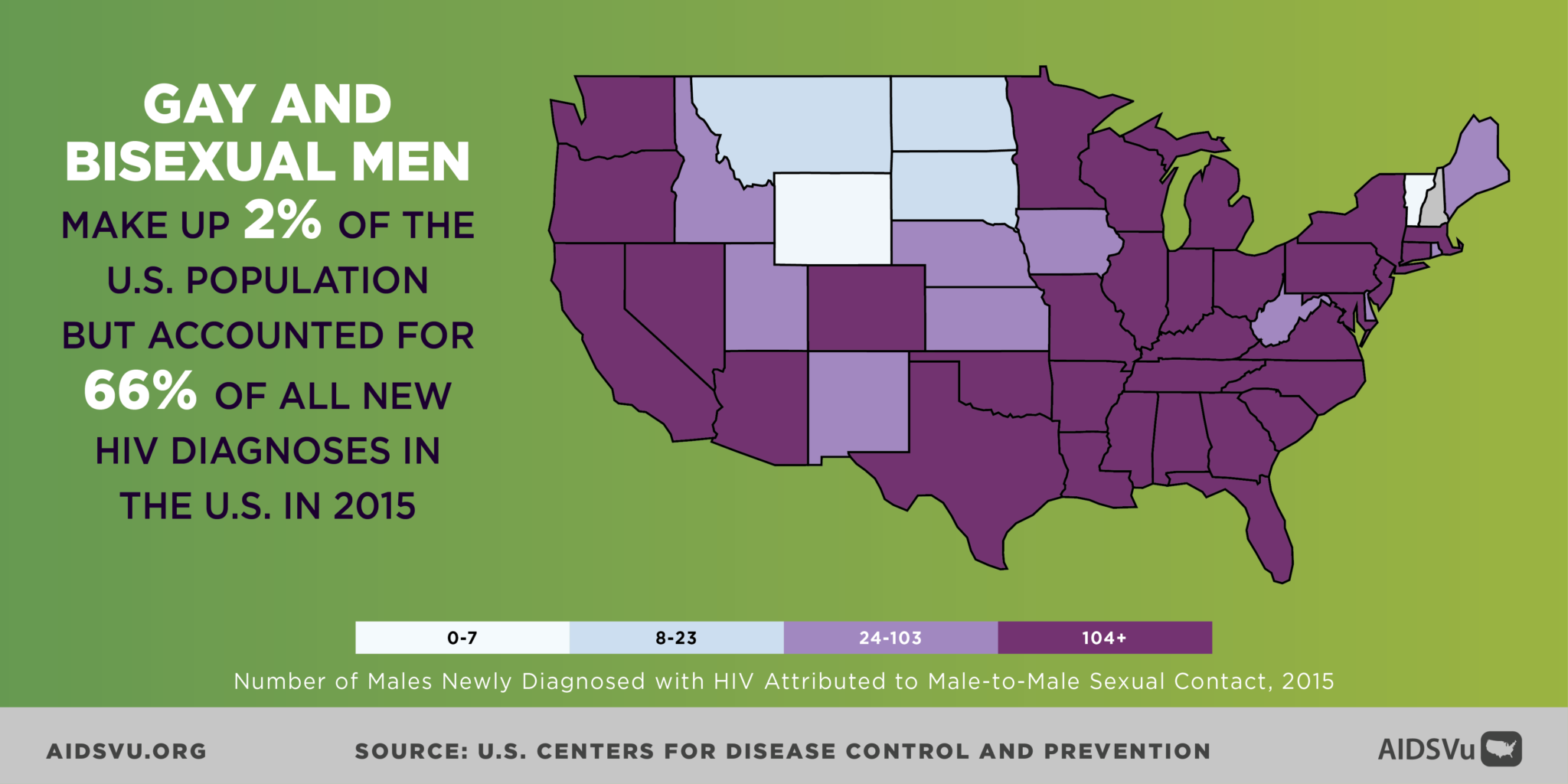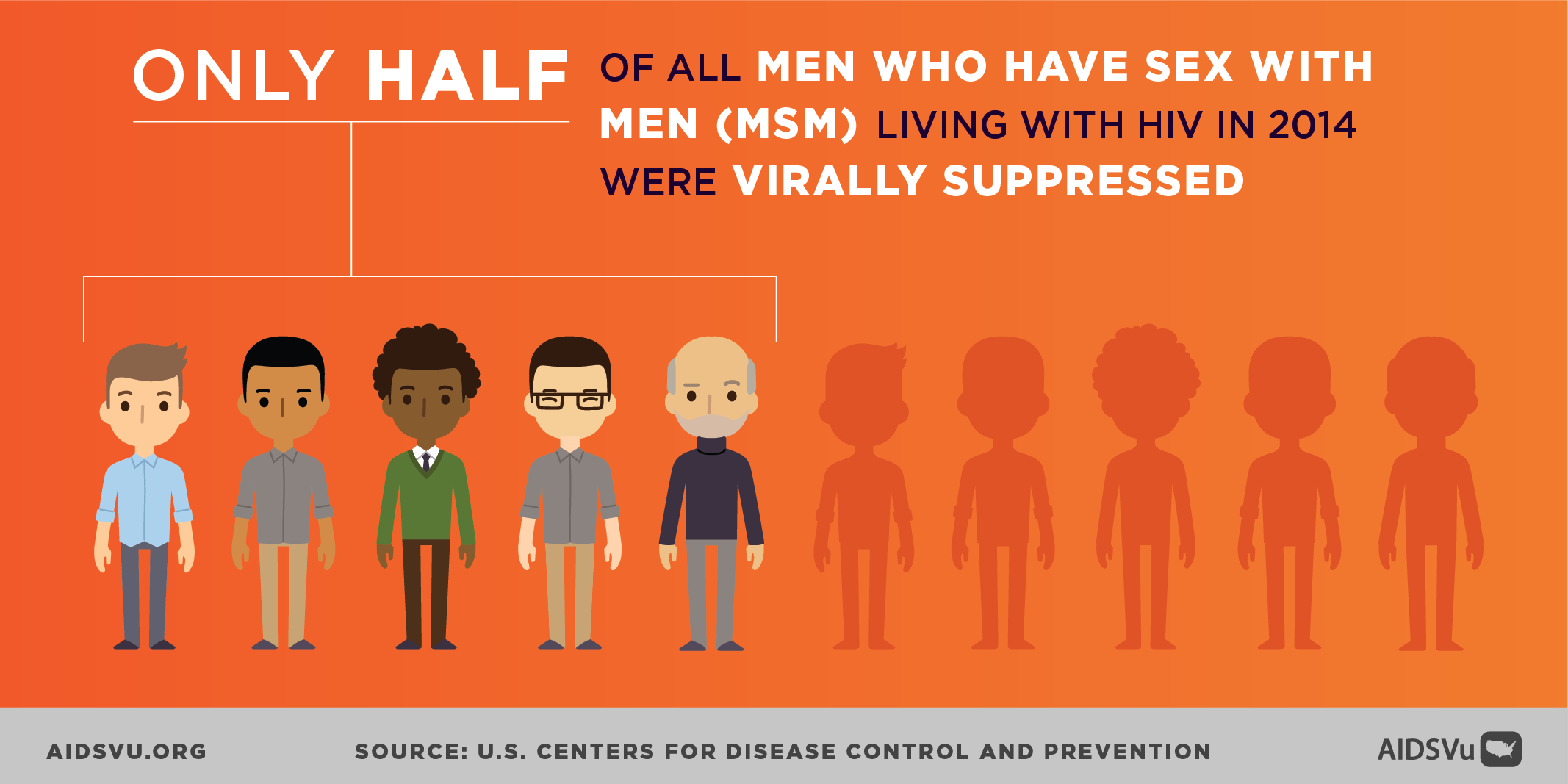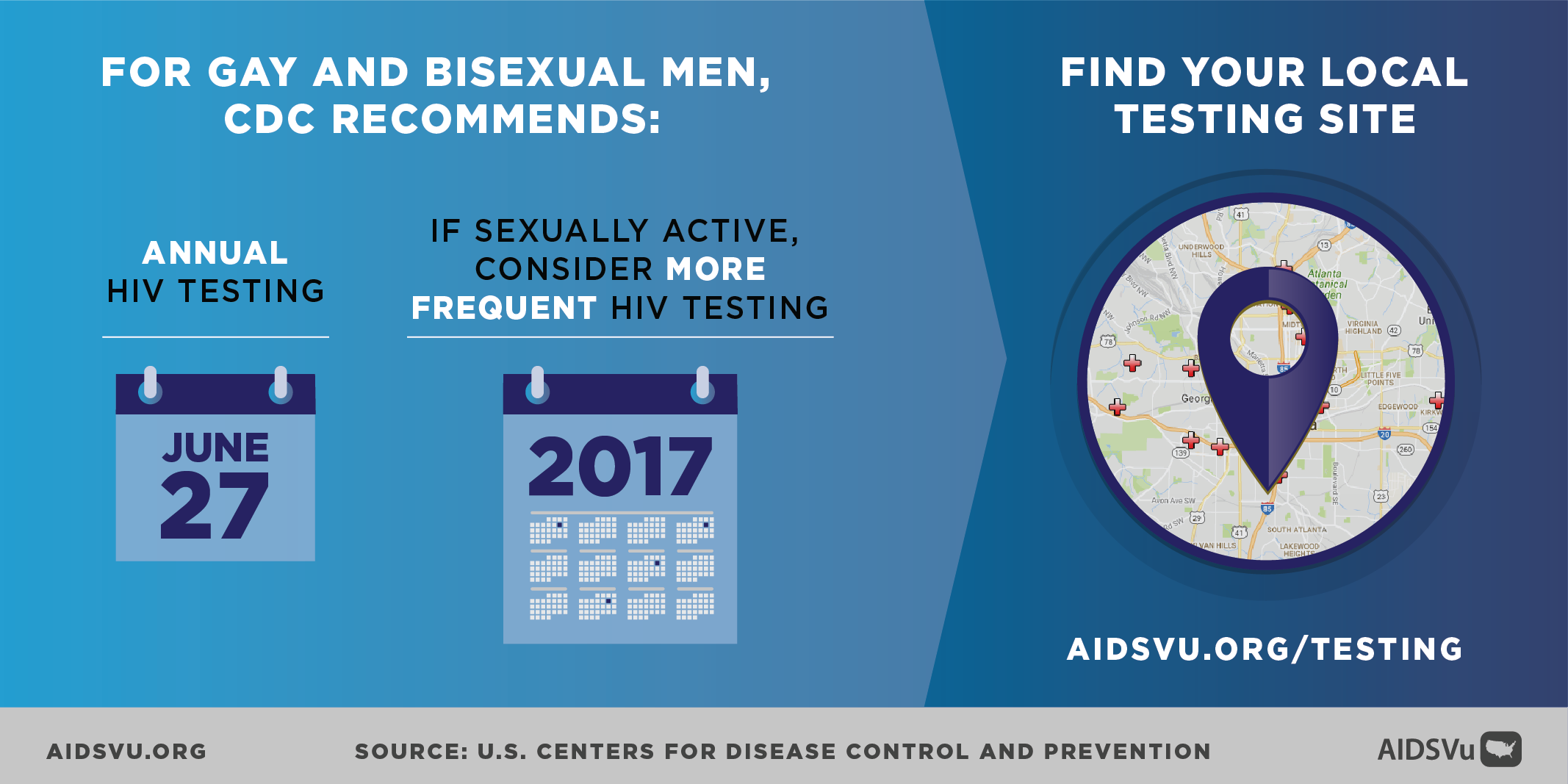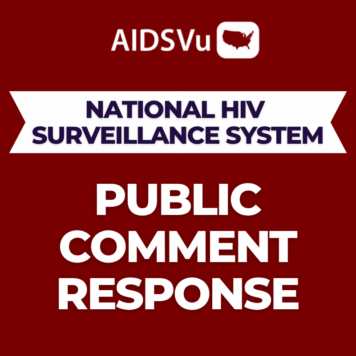Today we welcome Greg Millett, MPH, Vice President and Director of Public Policy at amfAR, the Foundation for AIDS Research and AIDSVu Advisory Committee Member, to share his insights on National Gay Men’s HIV/AIDS Awareness Day.
Since it was first identified over 35 years ago, HIV/AIDS has posed a complex and multi-faceted challenge to researchers, the public health community, medical providers, policy makers, and most importantly, patients. No group has been more severely impacted by the epidemic than gay, bisexual, and other men who have sex with men (MSM). They bear a disproportionate burden of the disease, as well as the stigma, especially in the earliest stages of the epidemic. Today, more than ever, the story of the epidemic’s impact on the MSM community is varied based on race, ethnicity and geography. While progress is being made on some fronts, we have much work still to do.
Earlier this year, the Centers for Disease Control and Prevention (CDC) released data showing that new HIV infections are decreasing across all groups (heterosexuals, injection drug users, black women) except for MSM. For MSM, the overall HIV picture, from new HIV infections to other health-related indicators, can be categorized as the good, the bad and the ugly:
The good news: Between 2008 and 2014, HIV infections decreased among MSM between the ages of 13 and 24. By race, new infections decreased among white MSM and remained stable among black MSM (which is good news given the unyielding and escalating new HIV infection rates among black MSM over the past two decades). Moreover, CDC recently released estimates showing that more MSM with HIV are virally suppressed than previously believed: 61% of HIV-diagnosed MSM were virally suppressed and 51% of all MSM (HIV diagnosed and undiagnosed) were virally suppressed. The use of HIV pre-exposure prophylaxis (PrEP) is also skyrocketing among MSM, which may help to ultimately decrease new infections nationwide. Finally, more MSM than ever have access to health insurance. CDC estimates that insurance rates rose among MSM from 2008 (68%) to 2014 (79%). Astoundingly, rates of insurance increased for MSM irrespective of race, income, HIV status or age during this time.
The bad news: New HIV infections are still increasing among MSM ages 25-35, and new HIV infections are also increasing among Latino MSM. The increasing rate of HIV infection among Latino MSM is particularly worrisome, given that we are only now beginning to slow down the runaway rates of HIV infection among black MSM. Likewise, the insurance access data reveal some less encouraging trends: Although insurance coverage rates have increased across all groups of MSM from 2008 to 2014, black MSM are still less likely than other groups of MSM to be insured. Fewer opportunities for health insurance have cascading effects: black MSM remain less likely than other MSM to be virally suppressed if HIV-positive, or to be on PrEP if HIV-negative.
The ugly news: The health insurance landscape remains uncertain and over the last several months the U.S. Congress has drafted multiple proposals to replace the Affordable Care Act, which would dramatically decrease insurance access for people living with HIV. Because most people with HIV in the US are MSM, any of the proposed repeal bills could roll back gains in insurance coverage and re-establish discriminatory practices, such as denial of coverage for pre-existing conditions like HIV. HIV-negative MSM may also be at risk because of the possibility of fewer options for insurance coverage, and diminished access to PrEP.
Download our full infographic for National Gay Men’s HIV/AIDS Awareness Day.
Additionally, disturbing trends in increased drug use among MSM could also impact rates of new infection. There are emerging data showing a growing number of black MSM using drugs associated with HIV transmission and acquisition. For example, crystal methamphetamine use is increasing among black MSM in Washington, D.C. while decreasing for white MSM. And it is not just meth use: CDC has reported that opioid use is on the rise for both black MSM and Latino MSM. Uncertainties around access to health insurance and changing patterns of drug use threaten to exacerbate existing disparities in HIV infection experienced by black MSM and Latino MSM.
As we think about National Gay Men’s HIV/AIDS Awareness Day, we should be thankful for the amazing progress that has been made in slowing, or even reversing, rates of new HIV diagnoses among some groups of MSM. But we should also be mindful of the major challenges ahead that could erase much of this progress and imperil the health and safety of another generation of MSM. Working together, we can protect the gains we have made and continue to push forward to a future in which new HIV infections among MSM are rare and all MSM have unfettered access to health insurance and high-quality health care.










